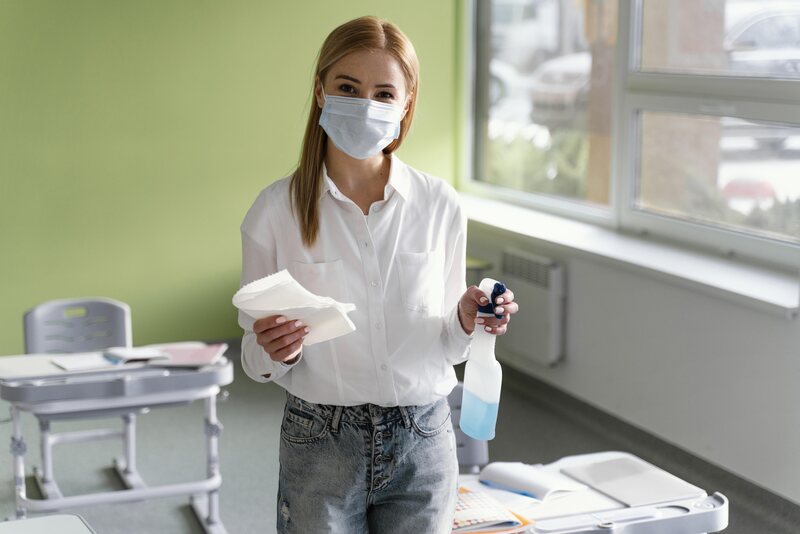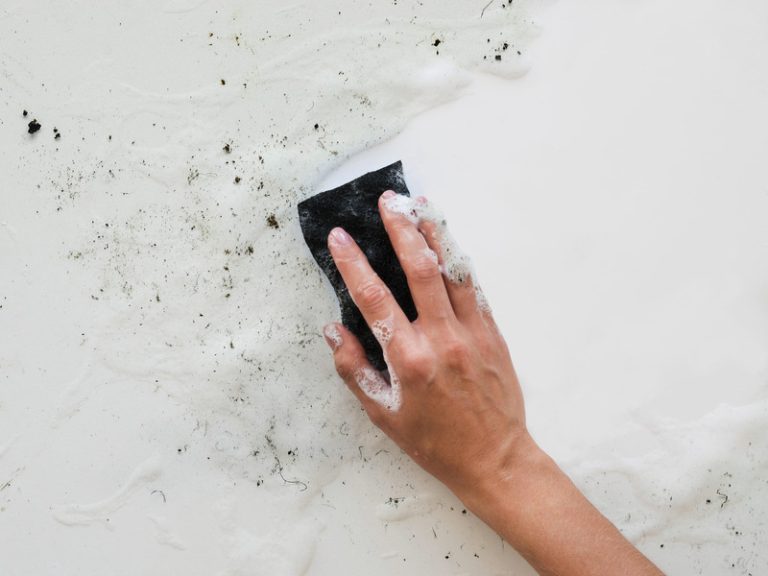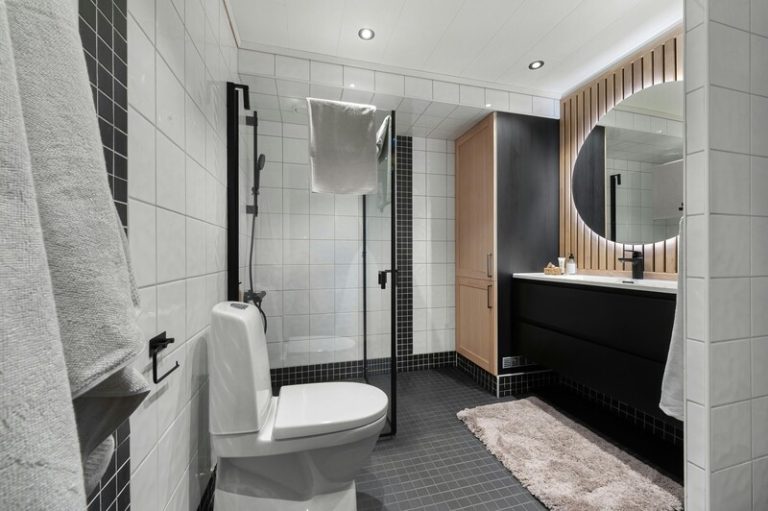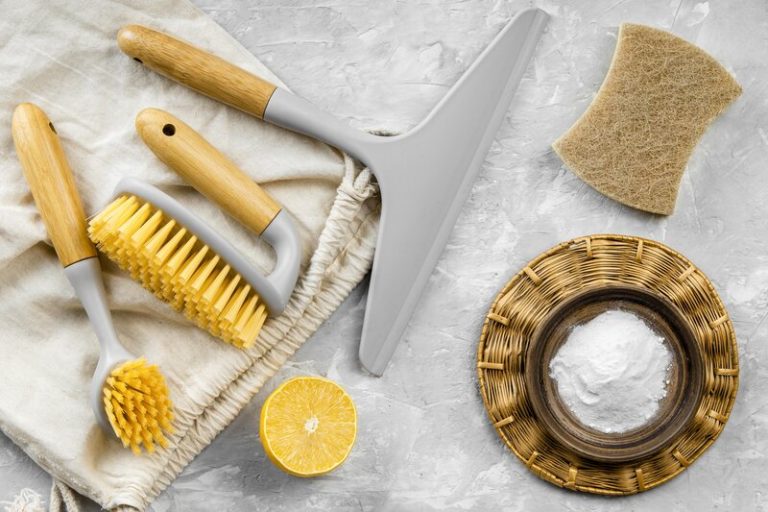A well-structured classroom cleaning checklist is essential for maintaining a productive and safe learning environment. With students moving in and out throughout the day, classrooms can quickly accumulate dust, dirt, and germs. A detailed checklist ensures that all areas, from desks to floors, are consistently cleaned and sanitised.
Implementing a daily, weekly, and monthly cleaning routine not only promotes hygiene but also enhances the overall classroom atmosphere, making it a more pleasant place for learning. By staying organised with a clear plan, you can keep your classroom spotless and inviting for both students and teachers.
Discover how a classroom cleaning checklist can simplify your cleaning tasks and ensure a healthy learning environment!
Why Classroom Cleaning is Important
Keeping the classroom clean offers several benefits, such as:
a. Health and Safety
A clean environment minimises the spread of germs, reducing illness among pupils and staff. This is particularly important in the post-COVID era, where hygiene has become a top priority.
b. Enhances Learning
A tidy classroom promotes a focused and calm environment where students can concentrate on their studies without unnecessary distractions caused by clutter and dirt.
c. Instils Responsibility
Teaching children the importance of cleanliness can instil a sense of responsibility and discipline. In many UK schools, pupils are encouraged to keep their personal spaces tidy.
d. Promotes Positive Attitudes
Clean classrooms can positively influence the morale of both students and teachers, making the space more pleasant and inviting.
General Guidelines for Classroom Cleaning
The frequency and type of cleaning activities depend on the school’s size, the number of students, and the classroom’s use. Some activities are performed daily, while others can be completed weekly or monthly. Here are some common types of classroom cleaning:
a. Routine Cleaning
Regular cleaning tasks carried out on a daily or weekly basis. These include dusting, vacuuming, and disinfecting high-touch surfaces.
b. Deep Cleaning
More thorough cleaning tasks done periodically, such as scrubbing floors, cleaning windows, and sanitising IT equipment. These are generally performed weekly or monthly.
c. Disinfection
Using cleaning agents or disinfectants to kill germs on surfaces. Disinfection is critical in preventing the spread of infections, particularly during flu season or a health crisis like the COVID-19 pandemic.
Classroom Cleaning Checklist
This classroom cleaning checklist is divided into daily, weekly, and monthly tasks to ensure that all aspects of the classroom are regularly maintained.
a. Daily Classroom Cleaning Tasks
Daily cleaning tasks are essential for maintaining basic hygiene and ensuring a tidy environment for the students and staff. Here are the recommended daily cleaning tasks:
1. Empty Rubbish Bins
Every classroom must have its rubbish bins emptied at least once a day, especially at the end of the school day. Use the appropriate bin liners and ensure that waste is separated for recycling whenever possible.
2. Sweep and Mop Floors
Classroom floors can easily accumulate dirt, dust, and food crumbs throughout the day. Sweeping the floors at the end of each school day ensures that no debris is left to attract pests. Mop the floors to clean up spills and maintain hygiene, especially in classrooms with younger children who may play or sit on the floor.
3. Wipe Down Desks and Chairs
Desks and chairs are among the most-used items in a classroom. Wiping them down with disinfectant ensures that germs are not transferred between students. Focus on high-touch areas like the edges of desks and the backrests of chairs.
4. Clean Whiteboards or Chalkboards
Whiteboards and chalkboards should be cleaned daily to avoid residue build-up. Use a dry cloth or specialised cleaning solution for whiteboards, and a damp cloth for chalkboards.
5. Sanitise Door Handles and Light Switches
Door handles and light switches are touched by nearly every student throughout the day. Disinfecting these surfaces daily is critical in reducing the spread of germs and ensuring the health and safety of students and teachers.
6. Tidy Bookshelves and Learning Areas
Organise books, stationery, and other learning materials on shelves and within the classroom. Tidying these areas not only enhances the room’s appearance but also ensures that resources are easily accessible.
b. Weekly Classroom Cleaning Tasks
These tasks are typically more thorough than daily cleaning activities and ensure that the classroom remains clean over a longer period. Weekly cleaning tasks include:
1. Vacuum Carpets or Rugs
For classrooms with carpets or rugs, vacuuming should be done weekly to remove dust, dirt, and allergens. In some cases, vacuuming may be needed more frequently if the classroom sees a lot of foot traffic.
2. Dust Surfaces
Dust can accumulate quickly on surfaces such as shelves, windowsills, and cupboards. Use a damp cloth to dust these areas weekly. Pay extra attention to high shelves and corners where dust can easily gather.
3. Clean Windows and Window Sills
Windows should be cleaned from the inside every week to allow natural light into the room and provide a pleasant learning environment. Wipe down the window sills and remove any dirt or stains.
4. Sanitise IT Equipment
Computers, keyboards, tablets, and other technology used in the classroom should be wiped down with disinfectant weekly. Ensure that electronic devices are turned off before cleaning and use approved cleaning solutions to avoid damage.
5. Wipe Down Display Boards
Classroom display boards, especially those near desks or seating areas, can collect dust and fingerprints. Wipe them down to keep them looking fresh and presentable.
6. Check and Restock Supplies
Ensure that there is an adequate supply of tissues, hand sanitiser, paper towels, and other essential items. Restocking these supplies ensures that students have access to what they need for personal hygiene and cleanliness.
c. Monthly Classroom Cleaning Tasks
These tasks are less frequent but equally important for maintaining a clean and sanitary environment over time. Monthly cleaning tasks include:
1. Deep Clean Floors
Once a month, deep clean the floors using specialised cleaning products. For hard floors, this may involve scrubbing or polishing. For carpeted floors, consider using a steam cleaner to remove embedded dirt and allergens.
2. Polish Furniture and Woodwork
Monthly cleaning should include polishing wooden desks, chairs, and other wooden surfaces. Use appropriate wood polish or cleaner to maintain their appearance and longevity.
3. Clean Ventilation Grilles and Fans
Dust and debris can build up in ventilation grilles, affecting air quality in the classroom. Monthly cleaning of these areas ensures proper airflow and reduces the spread of dust and allergens.
4. Wash Soft Furnishings
Curtains, cushions, and other soft furnishings should be washed at least once a month. This is particularly important in classrooms used by younger children, as these materials can harbour germs and allergens.
5. Sanitise Toys and Play Equipment
In early years classrooms, toys and play equipment must be cleaned and sanitised regularly to prevent the spread of germs. Monthly deep cleaning ensures that these items remain safe for use.
d. Seasonal or Term-End Cleaning Tasks
At the end of each term or school year, classrooms require more thorough cleaning. This may involve tasks such as:
1. Clean Ceiling Fans and Light Fixtures
Ceiling fans and light fixtures often go unnoticed during daily or weekly cleaning but can accumulate significant amounts of dust over time. Clean these areas during term breaks to ensure they are free of dust and debris.
2. Inspect and Repair Classroom Furniture
Conduct a thorough inspection of all desks, chairs, and other classroom furniture at the end of each term. Repair or replace any items that are damaged or worn out.
3. Organise Classroom Resources
At the end of each term, take the time to reorganise classroom resources such as books, learning materials, and stationery. Dispose of or recycle any damaged or outdated materials.
4. Disinfect Entire Classroom
End-of-term cleaning should involve a complete disinfection of the classroom. This includes disinfecting all surfaces, floors, and equipment to ensure the space is ready for the new term.
UK-Specific Considerations
In the United Kingdom, schools must adhere to certain health and safety regulations, including those related to cleanliness and hygiene. The Health and Safety Executive (HSE) provides guidance for maintaining a safe environment in educational settings. Here are some key considerations for schools in the UK:
a. Waste Management
UK schools are encouraged to implement effective waste management practices, including recycling and the proper disposal of hazardous materials. Ensure that rubbish bins are regularly emptied, and consider using composting for organic waste where possible.
b. Eco-Friendly Cleaning
The UK has a growing focus on sustainability, and schools are encouraged to use eco-friendly cleaning products that are free from harmful chemicals. This reduces the environmental impact of cleaning and ensures that children are not exposed to toxic substances.
c. COSHH Compliance
Schools must comply with the Control of Substances Hazardous to Health (COSHH) regulations, which require the safe use and storage of cleaning chemicals. Staff should be trained to handle cleaning products properly, and all chemicals should be stored securely.
Using a classroom cleaning checklist helps maintain a clean, organised, and healthy learning environment, ensuring both students and staff stay safe. While regular upkeep is essential, nothing beats the expertise and thoroughness of professional deep cleaning.
Instead of spending time and resources on managing all the cleaning tasks yourself, let TEKA Cleaning’s commercial cleaning services take care of it for you. Their trained team specialises in deep cleaning, ensuring every corner of your classroom is spotless and germ-free. By hiring TEKA Cleaning, you’ll not only save time but also enhance the overall hygiene and safety of your school.
Don’t compromise, call TEKA Cleaning at 01223 751 544 today to schedule a cleaning service and experience the peace of mind that comes with a perfectly clean environment!
Read also:











